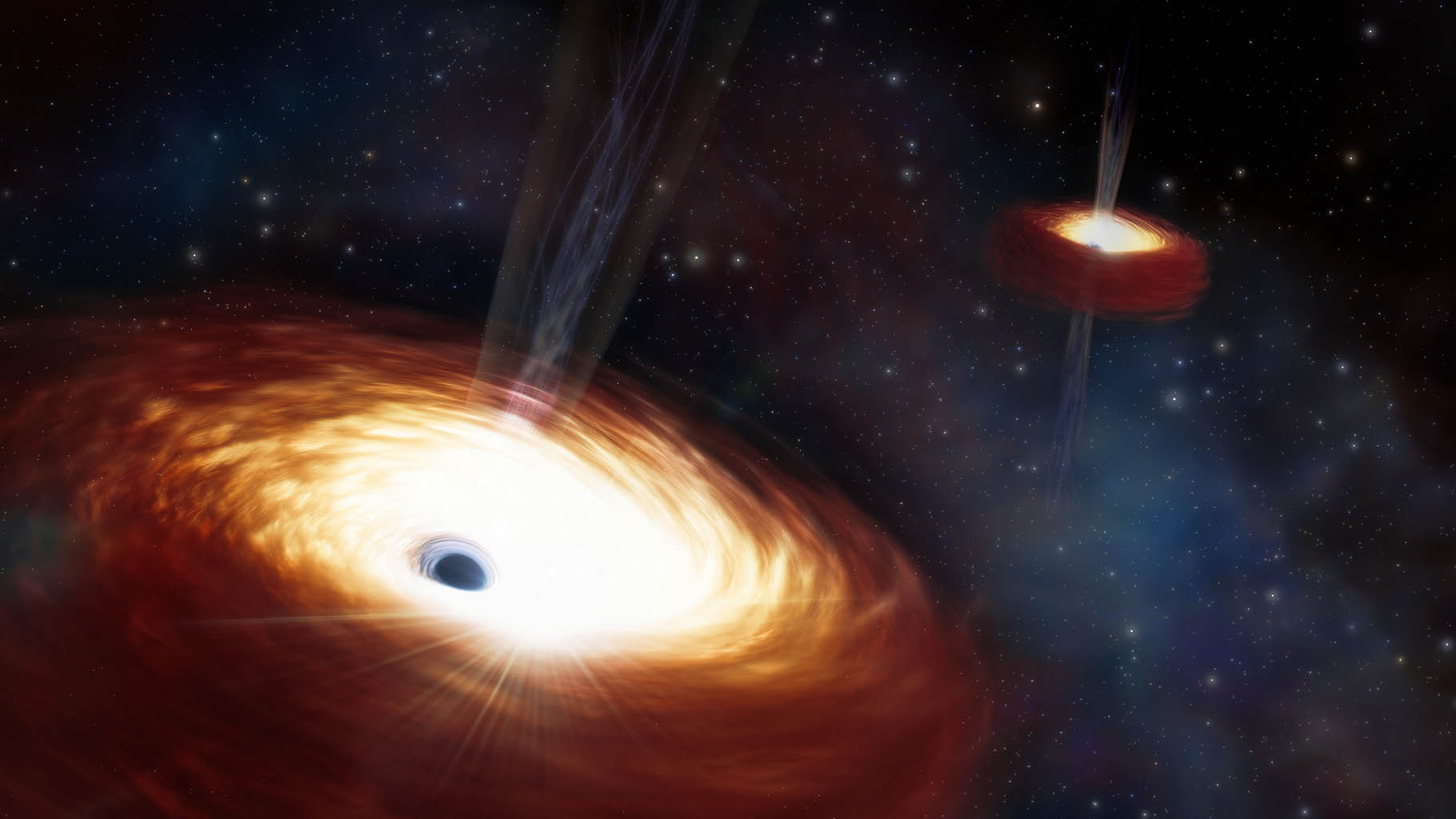Astronomers Measure Heaviest Black Hole Pair Ever Found

Using archival data from the Gemini North telescope, a team of astronomers have measured the heaviest pair of supermassive black holes ever found. The merging of two supermassive black holes is a phenomenon that has long been predicted, though never observed. This massive pair gives clues as to why such an event seems so unlikely in the Universe.
Nearly every massive galaxy hosts a supermassive black hole at its center. When two galaxies merge, their black holes can form a binary pair, meaning they are in a bound orbit with one another. It’s hypothesized that these binaries are fated to eventually merge, but this has never been observed [1]. The question of whether such an event is possible has been a topic of discussion amongst astronomers for decades. In a recently published paper in The Astrophysical Journal, a team of astronomers have presented new insight into this question.
The team used data from the Gemini North telescope in Hawai‘i, one half of the International Gemini Observatory operated by NSF’s NOIRLab, which is funded by the U.S. National Science Foundation, to analyze a supermassive black hole binary located within the elliptical galaxy B2 0402+379. This is the only supermassive black hole binary ever resolved in enough detail to see both objects separately [2], and it holds the record for having the smallest separation ever directly measured — a mere 24 light-years [3]. While this close separation foretells a powerful merger, further study revealed that the pair has been stalled at this distance for over three billion years, begging the question; what’s the hold-up?
To better understand the dynamics of this system and its halted merger the team looked to archival data from Gemini North’s Gemini Multi-Object Spectrograph (GMOS), which allowed them to determine the speed of the stars within the vicinity of the black holes. “The excellent sensitivity of GMOS allowed us to map the stars’ increasing velocities as one looks closer to the galaxy’s center,” said Roger Romani, Stanford University physics professor and co-author of the paper. “With that, we were able to infer the total mass of the black holes residing there.”
The team estimates the binary’s mass to be a whopping 28 billion times that of the Sun, qualifying the pair as the heaviest binary black hole ever measured. Not only does this measurement give valuable context to the formation of the binary system and the history of its host galaxy, but it supports the long-standing theory that the mass of a supermassive binary black hole plays a key role in stalling a potential merger [4].
“The data archive serving the International Gemini Observatory holds a gold mine of untapped scientific discovery,” says Martin Still, NSF program director for the International Gemini Observatory. “Mass measurements for this extreme supermassive binary black hole are an awe-inspiring example of the potential impact from new research that explores that rich archive.”
